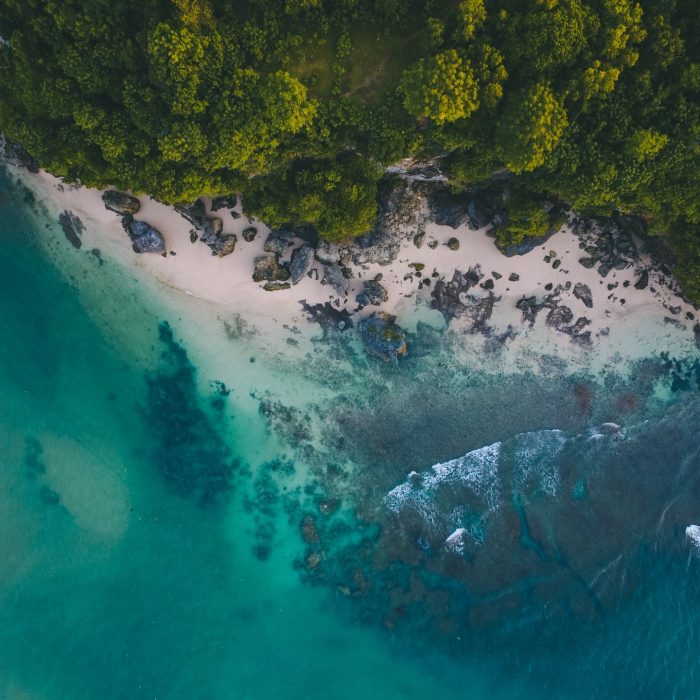Biological, Earth & Environmental Sciences
Centre for Marine Science and Innovation
- Home
- About us
-
Our research
-
Ecological management
- Clothes, fibres and filters that reduce pollution by micro and nano debris
- In Bygone Dives: Exploring the use of recreational SCUBA diving photographs
- Restoring oyster reefs to NSW
- Living Seawalls
- Operation Posidonia: Healing old wounds by restoring an endangered seagrass in boat mooring scars
- Operation Crayweed: restoring Sydney’s underwater forests
- Project Restore: restoration of seascapes in Sydney Harbour
-
Marine biotechnology and aquaculture
- Antibiotic resistance in the marine environment
- Priming fish with microbial communities to enhance health and digestibility of sustainable feeds
- Bio-prospecting marine microbial diversity for new antimicrobial drugs and bioactives
- Improving technologies for inland aquaculture in Papua New Guinea
- Improving the sustainability of rice-shrimp farming systems in the Mekong Delta, Vietnam
-
Anthropogenic and climate change impacts and interactions
- Ecology and impacts of marine invaders
- Impacts of multiple stressors on marine communities
- Impacts of urbanisation on the diversity and functioning of coastal systems
- In the spotlight: impacts of artificial light at night on the marine environment
- Linking functional diversity to stress thresholds for coastal conservation
- Effects of climate change on Shark Bay microbial mats
- Adapting to coastal tropicalisation: ecosystem function implications
- Global threats to ocean forests: understanding impacts of heatwaves, herbivores and diseases in kelp ecosystems
- How to make reliable high-resolution future projections for coastal regions
- Marine Heatwaves in a changing world
- Clothes, fibres and filters that reduce pollution by micro and nano debris
- Coastal, regional and global oceanography
- Fisheries and coastal resource management
-
Integrated micro-/macro-biology and ecology
- Coastal microbial observatories
- Functional diversity and redundancy of marine communities
- Microbial contribution to life in the deep sea
- The dynamics of evolution: How horizontal gene transfer drives the diversification and adaptation of complex, bacterial communities
- Probiotics for the ocean – how microbes can improve the health and performance of macroalgae
- Function and application of novel proteins from sponge symbionts
- Understanding disease in marine seaweeds: from molecular mechanisms to ecological consequences
- Understanding the role of antibiotic producing bacteria in the seaweed algal holobiont
- Wake interference by swimming crocodiles
- The effect of microbial diversity vs function on marine holobionts
- Understanding plant soil feedbacks control interactions between marine macrophytes
- Do microbes facilitate the range expansion of tropical fish into temperate systems?
- Science communication and outreach
- Solutions for estuarine and coastal stressors lab (SEACS Lab)
- Coastal and regional Oceanography lab
-
Ecological management
- Study with us
- Giving
- News
- Opportunities
- Home
- About us
-
Our research
Ecological management
- Clothes, fibres and filters that reduce pollution by micro and nano debris
- In Bygone Dives: Exploring the use of recreational SCUBA diving photographs
- Restoring oyster reefs to NSW
- Living Seawalls
- Operation Posidonia: Healing old wounds by restoring an endangered seagrass in boat mooring scars
- Operation Crayweed: restoring Sydney’s underwater forests
- Project Restore: restoration of seascapes in Sydney Harbour
Marine biotechnology and aquaculture
- Antibiotic resistance in the marine environment
- Priming fish with microbial communities to enhance health and digestibility of sustainable feeds
- Bio-prospecting marine microbial diversity for new antimicrobial drugs and bioactives
- Improving technologies for inland aquaculture in Papua New Guinea
- Improving the sustainability of rice-shrimp farming systems in the Mekong Delta, Vietnam
Anthropogenic and climate change impacts and interactions
- Ecology and impacts of marine invaders
- Impacts of multiple stressors on marine communities
- Impacts of urbanisation on the diversity and functioning of coastal systems
- In the spotlight: impacts of artificial light at night on the marine environment
- Linking functional diversity to stress thresholds for coastal conservation
- Effects of climate change on Shark Bay microbial mats
- Adapting to coastal tropicalisation: ecosystem function implications
- Global threats to ocean forests: understanding impacts of heatwaves, herbivores and diseases in kelp ecosystems
- How to make reliable high-resolution future projections for coastal regions
- Marine Heatwaves in a changing world
- Clothes, fibres and filters that reduce pollution by micro and nano debris
Integrated micro-/macro-biology and ecology
- Coastal microbial observatories
- Functional diversity and redundancy of marine communities
- Microbial contribution to life in the deep sea
- The dynamics of evolution: How horizontal gene transfer drives the diversification and adaptation of complex, bacterial communities
- Probiotics for the ocean – how microbes can improve the health and performance of macroalgae
- Function and application of novel proteins from sponge symbionts
- Understanding disease in marine seaweeds: from molecular mechanisms to ecological consequences
- Understanding the role of antibiotic producing bacteria in the seaweed algal holobiont
- Wake interference by swimming crocodiles
- The effect of microbial diversity vs function on marine holobionts
- Understanding plant soil feedbacks control interactions between marine macrophytes
- Do microbes facilitate the range expansion of tropical fish into temperate systems?
- Study with us
- Giving
- News
- Opportunities
News
Personalise

Filter by
Start by entering a search term or by selecting any of the filters to browse.
Start by entering a search term or by selecting any of the filters to browse.
Relevance
Latest First
